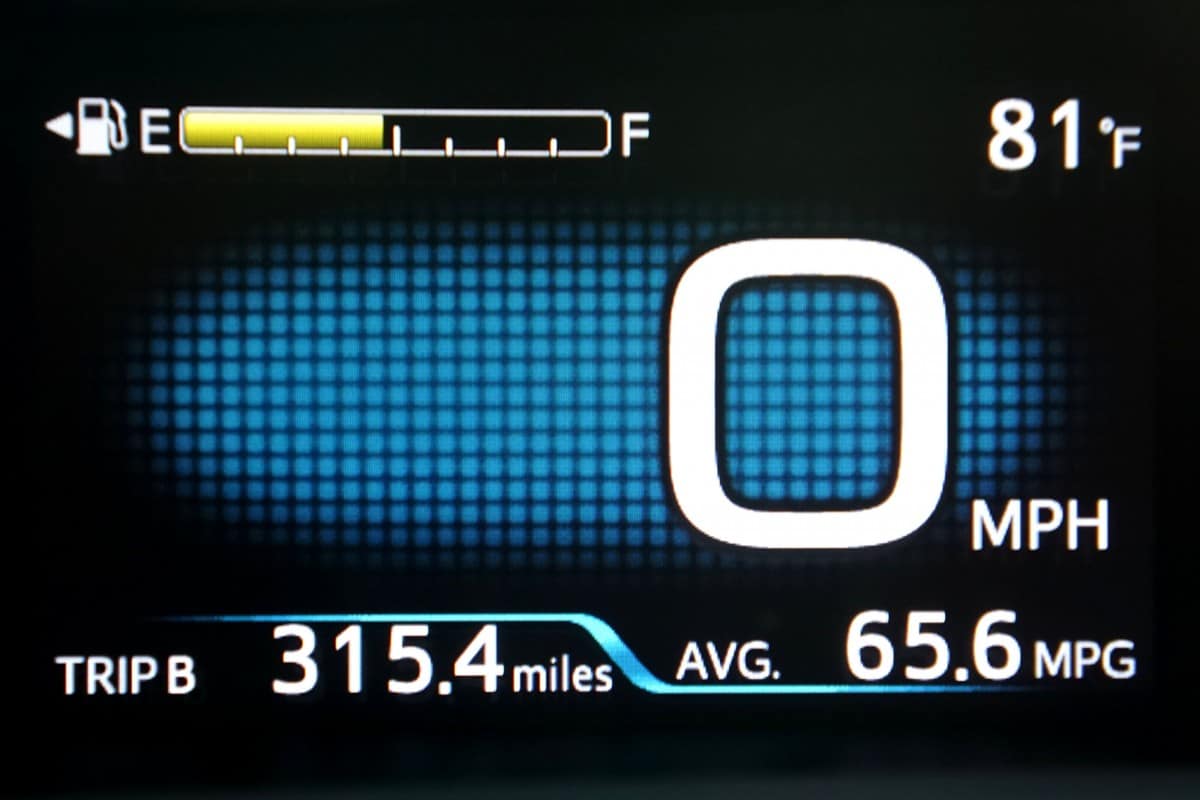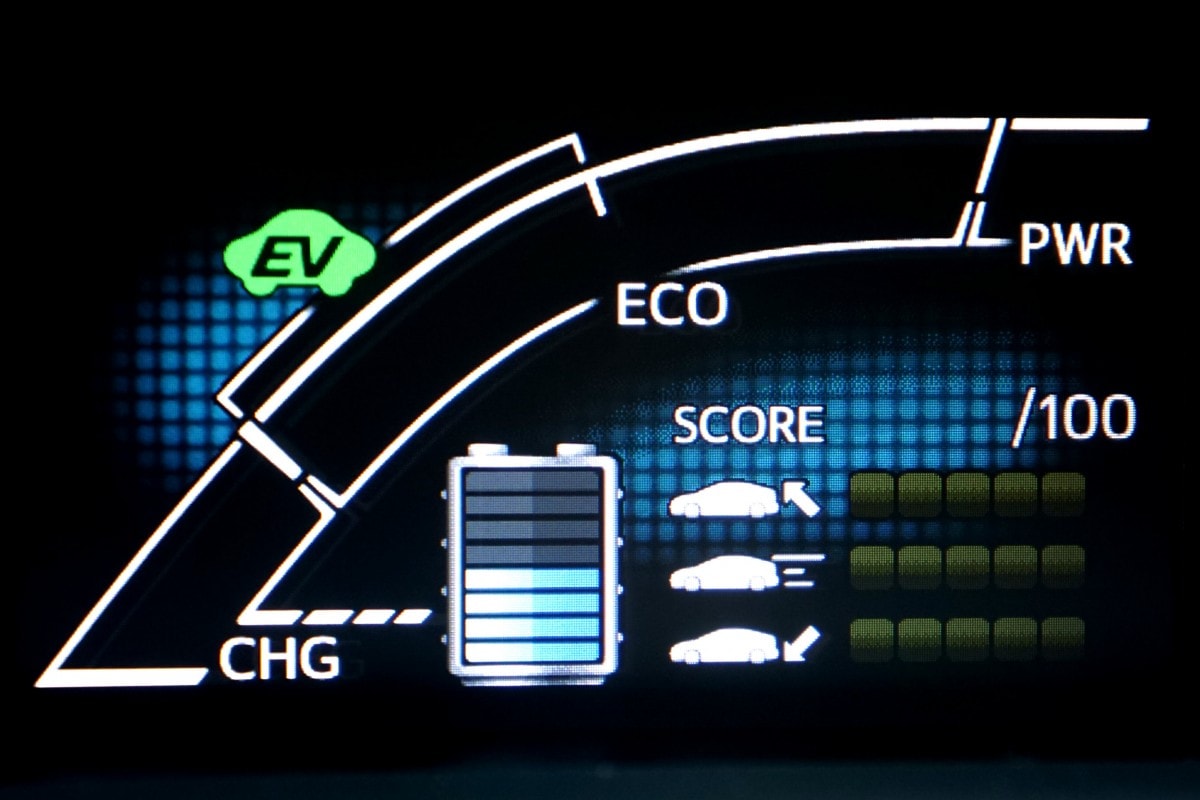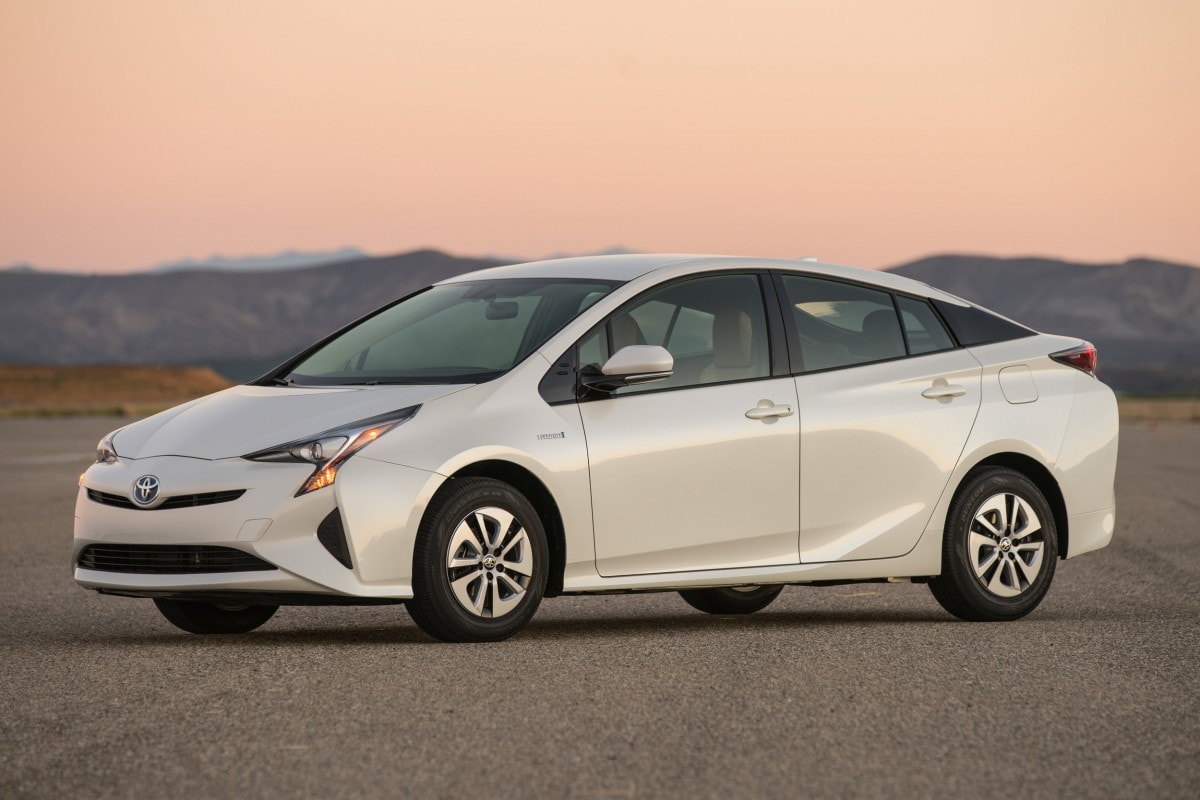The Eco gets a lighter battery and loses its spare tire for an inflator
kit, reducing its weight by around 65 lbs. It gets even-lower-rolling
resistance tires inflated to higher pressures, and a windshield designed
to block out the sun and ease the A/C’s workload.

High Score Mania Sets In
I vowed I would not “hypermile” but would instead drive like a normal
human being. This vow lasted about six minutes. I just can’t help
myself: A child of the burgeoning video game era, I’m a sucker for a
high score. I know some good hypermiling tricks, but I didn’t go crazy: I
engaged the Prius’ Eco mode (as opposed to Normal and Power modes), I
drove the speed limit (okay, occasionally slightly below), I accelerated
gently, and I planned my braking to maximize battery charging. (Like
most hybrids, the Prius charges the battery when you hit the brake,
storing energy that is used to power the car. The charging creates
enough resistance to slow the car significantly, and as a result,
Priuses rarely need brake jobs.)
But to be honest, I spent most of my time with one eye on the Prius’
Eco gauge, a moving bar graph that shows how much power you the car is
consuming. This gauge is a model of parsimony: Push the throttle
anywhere near the half-way mark and it lights up the red POWER band,
implying that by the simple expedient of keeping up with traffic, you
are attempting to enrich OPEC.

The Prius' Eco gauge. A bar rises on the graph to show how much power the car is consuming.
More important, I found, is the little “EV” icon, which shows when the
Prius is running on pure battery power and when the engine cuts in.
(Toyota has smoothed out the drivetrain to the point that it’s difficult
to tell from vibration alone.) Using this indicator, one can pretty
much turn the engine off at will—if you demand enough power to switch on
the gas engine, lifting off and then re-applying the accelerator is
enough to force the car back to electric-only mode.
The Traffic Jam Is Your Friend
Another tip: Don’t fear traffic. In a conventionally-powered car,
traffic is the Kiss of Fuel Economy Death. Just last week, I drove a
Mitsubishi Mirage G4 (for which I accept your condolences gratefully), a
car that should have returned 40 MPG. Instead, a couple of Los Angeles
traffic jams reduced that to just over 31 MPG.
But to the intrepid Prius driver, traffic is an opportunity. The
constant braking recharges the battery, and gentle acceleration lets the
gas engine stay dormant. Pay attention, pick the right lane, and you
can work your way through a nice long traffic jam with nary an ounce of
gasoline consumed.
What Can Normal People Expect?
Now, I don’t expect every Prius driver everywhere to achieve such
numbers, but I bet they’ll be close. My ex just got herself a 2016
Prius—a top-of-the-line model, not the Eco version—and she just sent me a
screen shot of her car’s dashboard: 49.9 MPG.
“I don’t even try,” she told me. “If I gave it any thought, I could
probably get more miles to the gallon. I feel like I hardly ever put gas
in it.”*
(* To all those who have commented that I’m no Bob Woodward, I would
like to point out that Mr. Woodward has never, to my knowledge, quoted
his ex-wife in a story.)
So, that’s the tale of how I squeezed 65 MPG from a Toyota Prius. I
don’t expect most Prius owners to see that kind of fuel economy in
day-to-day driving, but that’s the best part of this story: With the
Prius’ help, they can if they want to.
To read full article CLICK HERE


